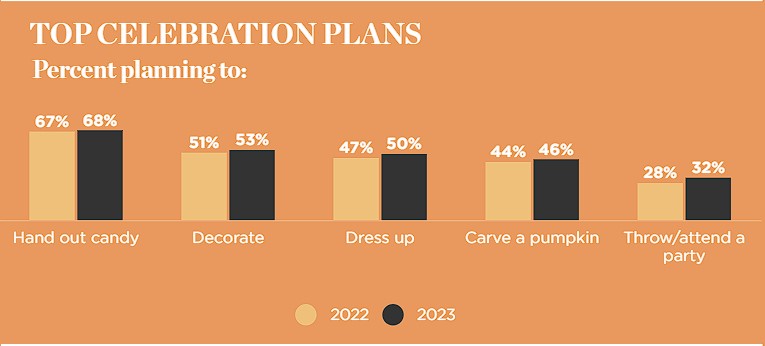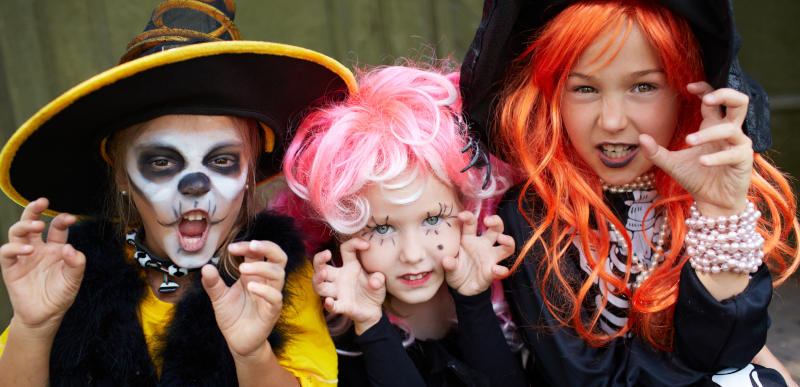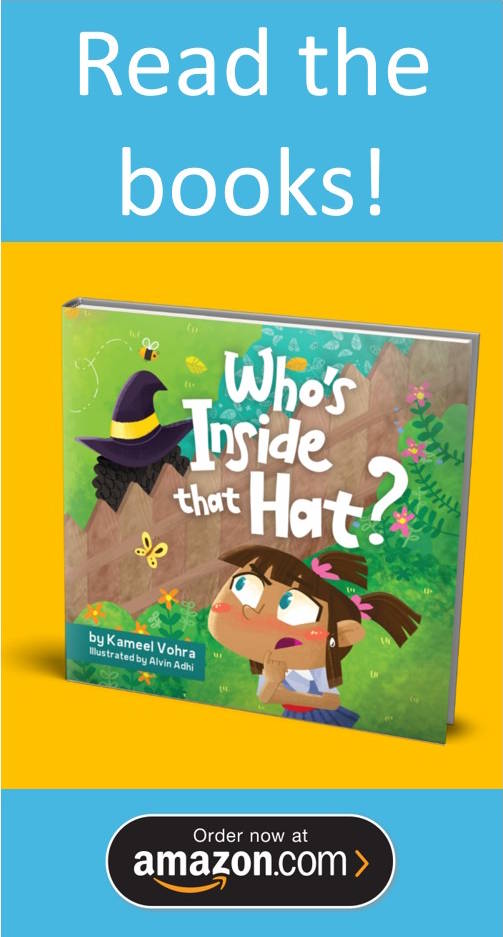Halloween, full of candy-filled festivities, decorated pumpkins, and creative costumes, has become a treasured holiday throughout the world for both children and adults. It also has a fascinating history and is a great opportunity to teach your little witches & warlocks some valuable lessons whilst they celebrate. Let’s have a quick look at the history, what happens across the globe, and some of the lessons children can learn!
The History of Halloween
The origins of Halloween go all the way back 2,000 years to the ancient Celtic festival called Samhain. Samhain was celebrated in Ireland, the United Kingdom, and northern France by the Celts. This celebration helped to mark the end of the harvest season and the beginning of winter. They believed that on October 31st the boundary between the living and the dead was blurred which allowed spirits and otherworldly entities to roam the Earth. To defend themselves from the spirits the Celts started bonfires and wore disguises made from animal heads and skins; they believed this would protect them from the spirits and supernatural entities. During this time, as the Roman Empire expanded and absorbed the Celtic territories, their traditions began to intermingle. The Romans had a festival called “Pomona.” This festival celebrated the goddess of fruit and trees. It also took place in October and involved apples and nuts. There is speculation that this is the origin story of bobbing for apples, which is often associated with Halloween now. As Christianity began to spread across Europe, Christian and Pagan traditions began to blend. In the 8th century, Pope Gregory III designated November 1st as “All Hallows’ Eve” and that slowly became Halloween.
Is Halloween the same as Day of the Dead or the Chinese Ghost Month?
Whilst Halloween has become increasingly more popular and is celebrated across the world, it is very different from similar celebrations in other parts of the world.
- Mexico: Halloween is celebrated as a children’s festival in Mexico, and is distinctly different from their traditional celebration of Dia de los Muertos (Day of the Dead), which happens a day later on Nov 1st – though there is some intermingling of the two celebrations happening. During this celebration, families build ofrendas to honor family members who have passed away. The celebration is colorful and vibrant and celebrates remembrance, life and death.
- China: Halloween is not widely celebrated in China and is very different from the Ghost Month festival. Similar to the Day of the Dead, it is a time to pay respects to deceased ancestors and to offer them food and other luxuries. It is based on the belief that the gates of the underworld open up during the seventh month of the lunar calendar, and ghosts and spirits are able to roam the earth. Unlike the Mexican festival, there is no carnival, it’s a more somber affair.
- UK & Ireland: As the birthplace of Halloween, the celebrations are deeply rooted in their history. They light bonfires, carve pumpkins (and sometimes turnips). Children & adults dress up in costumes and enjoy trick or treating. Halloween is a major cultural and commercial festival in the UK & Ireland. Costume parties are very common across all ages.
- United States: According to a 2023 survey by the National Retail Federation, 70% of Americans plan to participate in Halloween celebrations. This makes it the second largest commercial holiday in the United States, after Christmas.

What Lessons Can Children Learn from Halloween?
If you would like the festival to be about more than candy, scary costumes, and pumpkins here are some ways children can learn from Halloween celebrations:
- Cultural Awareness: During the celebrations, as a family, you can discuss the variety of ways the holiday is celebrated across the world. This will introduce your children to different cultures and traditions. Learning about how other people celebrated increases their open-mindedness and sets the foundation for cultural appreciation.
- Responsibility: As you are celebrating, you have the opportunity to teach your children about the responsibility of following safety guidelines as they are trick or treating; emphasize the importance of wearing reflective gear, following all traffic rules, and how to safely check candy. Additionally, children can learn the valuable lesson of self-control as they are guided to pace themselves as they consume the many goodies they have collected.
- Creativity and Imagination: Children should be encouraged to be creative with their costume selections. The experience of thinking about and creating (or purchasing) their costumes allows them to have an avenue for self-expression. Not only that, but the stories and tales that are associated with Halloween help to foster their imagination. As a family activity, you can create your own spooky stories and pictures. Each year, you can expand those stories to create uniquely elaborate tales!
- Community: Halloween is a community event. The children can explore their neighborhoods, attend parties with family and friends. During social events, children develop social skills, they make friends, and they build a sense of belonging.
- Generosity and Kindness: Children experience the joy of being on the receiving end of trick or treating. This allows them to understand how they can give to others and make them feel the same way. Often as children age, they go from being out all night knocking on doors receiving candy from their neighbors, to planning parties at home with their friends where they start giving back candy to their little neighbors who knock on their door.
- Gratitude: As a family, you can sit together and talk about how much fun they had during trick or treating. Help them be grateful for the candy they received and discuss the many costumes they saw and highlight some of their favorites. During this discussion they can learn to appreciate the effort that everyone puts into celebrating Halloween.
Halloween is more than just candy and fun
Halloween is a holiday that has grown and changed throughout the years. It started with Celtic, Roman, and Christian influences and has slowly morphed into what it is today. It’s celebrated worldwide, with each country putting their own spin on the celebrations. Beyond the fun celebrations of costumes and candy, Halloween can offer valuable lessons for children. It encourages cultural awareness, responsibility, creativity, imagination, community, generosity, kindness, and gratitude. Even while having a fun time these lessons can help children grow and develop. As you are dressing up, trick or treating, carving pumpkins, bobbing for apples, or sharing sweet treats be mindful of the opportunity to impart important lessons and morals to your children during these moments.
Halloween can be about more than spookiness, it can be a celebration of tradition, culture, respect and community. It can be about gratitude and kindness. What will Halloween be about for your kids this year?



